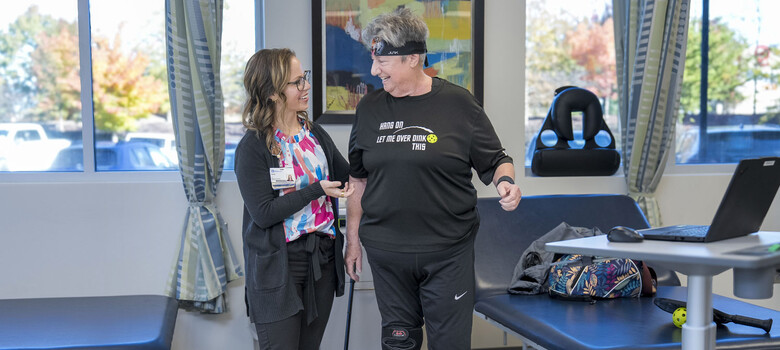 From the DukeHealth.org archives. Content may be out of date.
From the DukeHealth.org archives. Content may be out of date.
Active and Pain Free After Hip Replacement

“If not for Duke Orthopaedics and modern science I would be in a wheelchair,” says Gwen Palmer who underwent hip replacement surgery. Instead, she spends her days, as she puts it, “running around a lot.”
Gwen Palmer, 59, got more than she bargained for with her hip replacement. She hoped for pain relief, but says the results exceeded her expectations. “I got better quickly,” she says. “And a year after surgery, I was better than 100 percent."
The garden designer from Durham, NC, has an active life and a job that demands she be up and around. When her hip pain starting slowing her down, she says she felt demoralized. “I couldn’t walk very well before the surgery. The pain was wearing me down, and I was functioning at a much slower pace,” she says.
Palmer had total hip replacement by Duke orthopaedic surgeon David Attarian, MD. “Hip replacements allow people to be pain free 99 percent of the time,” Attarian says. Afterwards, patients really don’t have any activity restrictions. “They can do whatever they want,” he says.
Thanks to advances in technology, today’s hip replacements last 20 to 30 years. “A lot has changed since this procedure was first available in the 1970s,” he says. “Initially, complication rates were high, and because of the material the hips were made of, they lasted 10 years if you were lucky.”
Palmer says she’s grateful for the technology, as well as the skill of her surgeon. “If not for Duke Orthopaedics and modern science I would be in a wheelchair.” Instead, she spends her days, as she puts it, “running around a lot.”
“We’re quality-of-life surgeons,” says Attarian. “Joint replacement doesn’t save lives, but it does make them better.”



